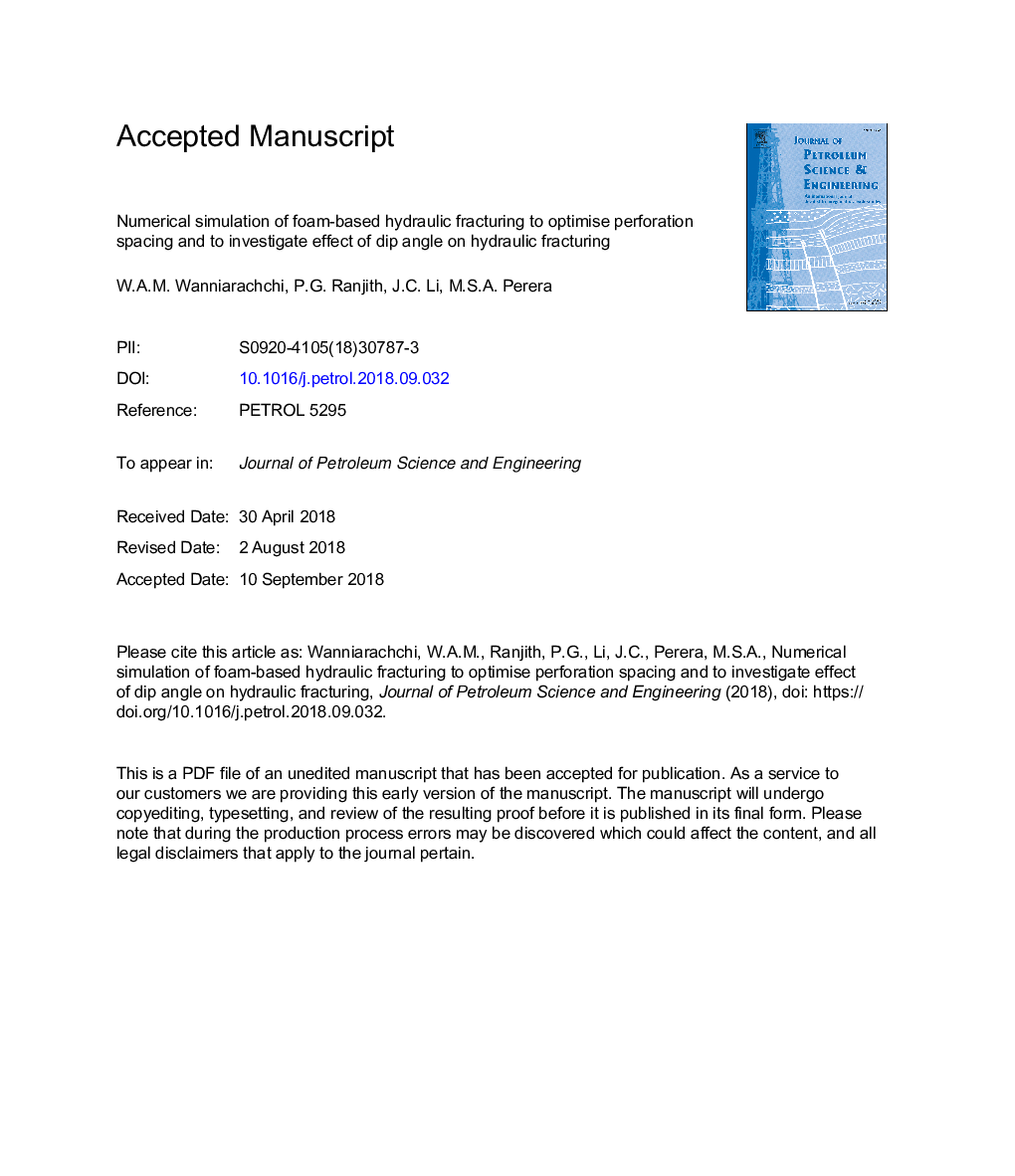| Article ID | Journal | Published Year | Pages | File Type |
|---|---|---|---|---|
| 10156370 | Journal of Petroleum Science and Engineering | 2019 | 38 Pages |
Abstract
Foam-based hydraulic fracturing has been identified as a promising technique to extract unconventional natural gases such as shale gas and tight gas. However, due to the complex two-phase nature of foam, its use has been limited to a few field-scale applications. Therefore, precise understanding of foam-based hydraulic fracturing is essential in order to optimise fracture treatment processes. The aim of this numerical study is therefore to develop new models to predict and evaluate foam-based hydraulic fracturing. In order to achieve this, two models were developed: 1) a 3-D model to simulate the effect of perforation spacing and 2) a 2-D model to simulate the effect of dip angle on hydraulic fracturing. According to the results, perforation spacing has a direct influence on hydraulic fracturing, and a reduction of spacing from 100 to 25â¯m, increases the overall strain levels near the perforations by 350%. The numerical results also reveal that the dip angle directly influences the fracture network, and the fracture propagation is limited to only one direction. However, the results suggest that the effect of dip angle on fluid flow is negligible, and the pressure distribution remains almost the same in a direction perpendicular to the dip.
Related Topics
Physical Sciences and Engineering
Earth and Planetary Sciences
Economic Geology
Authors
W.A.M. Wanniarachchi, P.G. Ranjith, J.C. Li, M.S.A. Perera,
